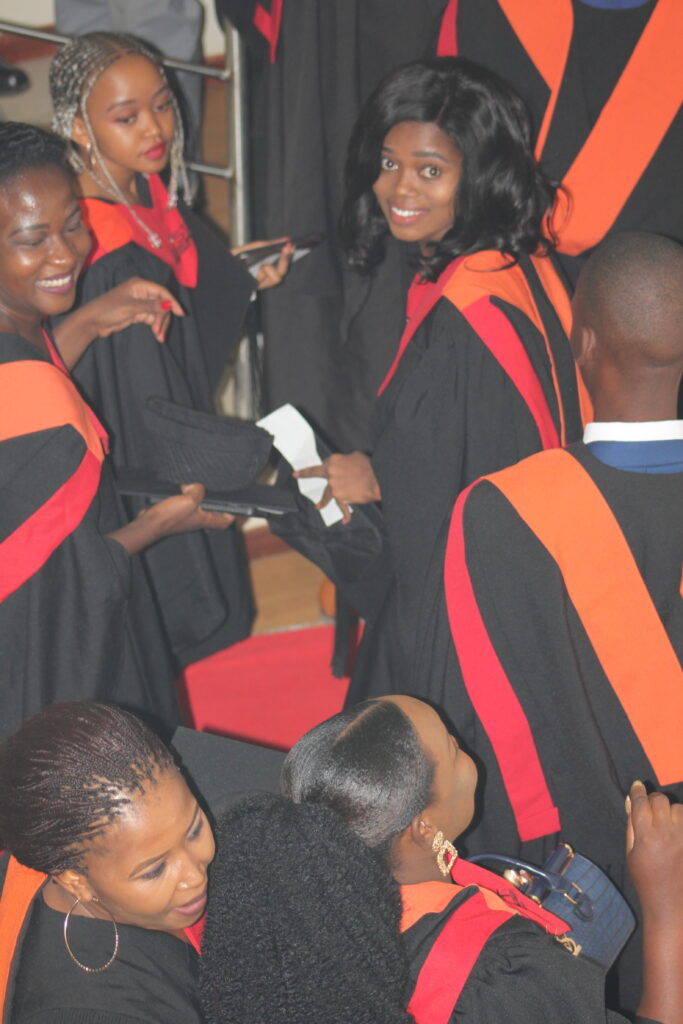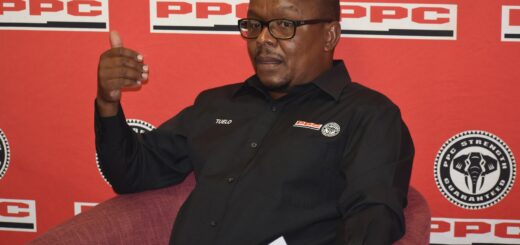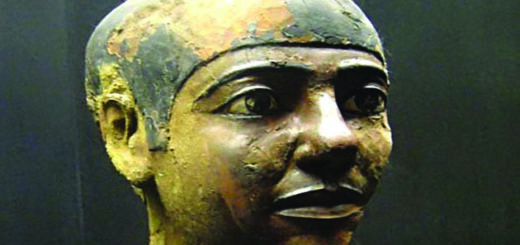The Study of Engineering ; Why Universities Should Change before it’s too Late
Written by : Proffessor Edward Chikuni -Botho University

Those of us who follow issues of development and sustainability talk about the Water, Energy and Food Nexus, meaning that Water, Energy and Food are all connected. We speak as if these are new buzz words, and as if we have just invented them. Here in Africa, where Civilization began, we have not only known about this Nexus, but we have lived it. Many thousands of years ago, it was the African Woman who was responsible for fetching water from a river many kilometers from her home, fetching firewood from thickets even more kilometers away and preparing food from a harvest that was often a miracle to realize. For the woman this happened every day, for the rest of her life. However old we are, whatever we are, we always remember Mother. We once witnessed an unfortunate incident in central Johannesburg South Africa. A man broke into a car in one of the streets; the owner caught him, and shot him. As he lay dying he was crying, “Mother”. Even a car thief, knows that Mother is where we all came from, and who fended for us, rain or shine. As I write we have just had Mothers’ Day. Happy Mothers’ Day!
Back to the Nexus, which Mothers and the Girl Child took for granted, for so many centuries. There was one thing that connected the Nexus: Mobility. We often take Mobility for granted. Without mobility, the Water, Energy, Food Nexus is broken. Without water, it is said you can’t live 3 Days; if you are lucky 8 Days. Now to achieve Mobility we need Energy, which we of course get through the Food we eat. Over time, civilizations developed the wheel and animal drawn carts to carry more water, fetch it from wells, and help even food preparation. These new technologies transformed people’s lives and were associated with what we now call Industrial Revolutions. Each Industrial Revolution is associated with more Energy Consumption. Industry 4.0, Industry, 5.0 are energy consuming, with Industry 5.0 consuming more energy than Industry 4.0. According to the University of Cambridge, crypto-currency mining will soon consume almost 1% (over 130 Terawatt-hours) of the Global Energy Consumption.
Many of us do not realize how Mobility is key not only to as us individuals, but also to a Nation. For the landlocked, sparsely populated country that Botswana is, Mobility is everything. Very few of us are privileged to know what is inside those big trucks that ply our roads every day; except those often dreaded customs and tax officials. Suffice to say, it could be fruit and vegetables from Zimbabwe and South Africa and Steel from South Africa, even imported second vehicles from Japan. Over 70% of the vehicles in Botswana and second hand vehicles, from Japan. The biggest trucks are huge and gobble a lot of diesel. To move 3 Kilometers, you may need a litre of diesel (3km/l). Mining and Construction trucks are particularly fuel hungry. These trucks are very large, indeed. The picture below shows one of these. Such trucks are taller than houses and their wheels are turned by electric motors.

Now, big trucks, many cars, inefficient vehicles spell disaster for the world, and for nation states. The smoke which comes out of their exhausts, merely because of their operation is now of deep concern. As healthy individuals, we take Mobility for granted. In remote, rural Africa, there are places where an Ambulance or Emergency Medical Services (EMS) are unheard of. To take the very ill beloved to the nearest clinic or hospital, you will be lucky to find a willing set of donkeys, or oxen and a cart with no puncture. Now willing oxen is what our clan never had. It took 4 to 5 days to find them. Usually cattle saw you first and they would hide in a thick bush. When you eventually found them they would take off in different directions, as if they had planned everything. Finally, with the help of other boys you would be able to round them up and drive them into a pen. Come the following day, Monday Morning, the day of Dipping you find the pen empty; all the cattle have jumped over. So the lesson is if you cannot depend on donkeys or cattle to assist you with Mobility, better use Plan B: the wheel barrow. It is no exaggeration that Wheelbarrows have been the only reliable solution for Mobility, more reliable than an ambulance for some rural settings.
One of the Largest Dump Trucks in the World
We have said that these big, old, trucks and cars are bad news on a grander global scale. Why? Climate Change and Global Warming. More Energy means Climate Changing for the Worse, Global Warming getting worse. Now mankind has always been interested in knowing what the weather will be in the future, for farming or during the planning of battles. Knowing more than another is what propelled the computer revolution. In the US, the Electronic Numerical Integrator and Computer (ENIAC) was built at the University of Pennsylvania for the US Army for the calculation of missile trajectories necessary for effective elimination of enemies during war. According to the US Ballistic Research Laboratory Report 471, “By the end of its operation in 1956, ENIAC contained 18,000 vacuum tubes; 7,200 crystal diodes; 1,500 relays; 70,000 resistors; 10,000 capacitors; and approximately 5,000,000 hand-soldered joints. It weighed more than 30 short tons (27 t), was roughly 2.4 m × 0.9 m × 30 m (8 ft × 3 ft × 98 ft) in size, occupied 167 m2 (1,800 sq ft) and consumed 150 kW of electricity”. Today a Smart Phone with the right APP is several times much more powerful than the ENIAC.
ENIAC.

The invention of the transistor led to quantum leaps in microelectronics. I remember specifically the late 1979, when personal computers where being designed and built, mostly by enthusiasts. Of note was the TRS Tandy, the Sinclair ZX 80, and the NASCOM, the first Computer I myself built, completely from parts. The Game Changer was the IBM PC which changed everything for ever when Bill Gates who used to write for Byte Magazine (of which I was an avid reader), wrote Microsoft DOS which soon replaced IBM’s PCDOS. Now Bill Gates is a drop out from Harvard. He was a dropout of the kind that goes to University and before the Professor has completed deriving an equation or discussing a concept says, “Goodness, what am I still doing here? I can be making money with this equation, this concept”. Bill Gates proved that Software could be more powerful, and certainly more financially rewarding than hardware. Needless to say Bill Gates, the founder of Microsoft is a multibillionaire today. When Microsoft Windows came computers became more prevalent. In the Railways where I worked for many years, some consultants said that it was a good idea for Engineers to be given PCs. The administration people obviously got the advice first and through their quick thinking decided that a Steering Committee was going to oversee the purchase and distribution of the computers. Eventually we figured out that the whole idea of the Steering Committee was that Engineers would not have computers. When eventually some computers were delivered, some remained in the Computer Centre for endless configurations and testing, some inexplicably ended up with some low level managers, who sadly did not have the faintest idea of what to do with them.
Getting Back to Mobility
The issue of on-board diagnostics (OBD) for cars, came about the time the computer had drastically been reduced in size. The microcomputer became reality from 1980 and business minded people contrived the many ways to apply them, just for the money. So OBD was introduced in cars to give visible signals on a cars performance right to the dashboard. Later versions of OBD (OBD2) benefited from large and cheaper computer memories and so today OBD gives your car’s emission profiles, fuel consumption and equipment failure modes and history. OBD is now part of what we know as the ECU (Engine Control Unit). Through the interrogation of the ECU the Japanese and other advanced country authorities are able to know whether your car is roadworthy or not. Emission is a most critical parameter. Many of the cars that have failed emission standards find themselves in Africa. We sometimes see cars advertised for $100.00
Vehicle Technology, the Road from Simple to Complex
The first old cars were very simple, they just used the Internal Combustion Engine Principle of Otto, the German Engineer. I still remember the Ford Model A which my father owned many years ago. We used to load it with anything and everything, including bricks. The model A Ford (“The car with Spoke Wheels”, we called it.)


Model A Car and Engine
The Japanese are well known for they entrepreneurial acumen and business sense. One of the most successful early car models was the Datsun 120Y, whose engine some say is near identical to the British Mini Morris. Both the 120Y and the Mazda 323 are simple functional cars. In the rare cases when these cars breakdown, there are always people to stop by and give you some assistance, “Check the Points”, they say. There are no visible Sparkplugs or Points on a BMW X5 Engine. When my son bought one, I said to him, my condolences. The vehicle drives very fast (I should say “fly”), but never flies past a petrol station. After a few months, my son, and his X5 parted ways. My son’s ambition was to be the best motor mechanic in Zimbabwe, like his grandpa. He changed his mind when he arrived in America. He has just become a Dr. in Education.
Enter Control Systems inside your Car
Whether by design or accident, microprocessors will now be with us forever. In the US General Motors Car Production has been severely curtailed due to the shortage of chips. Why? There is a body of knowledge that is required to make high performance, efficient cars. This knowledge is that of Sensors and Control Systems. University Engineering Curricula usually have a module called Control Systems, or Control Engineering, especially as part of Mechanical or Electrical Engineering. As students, some of us disliked it, others found it hard to understand. Still others, said, “What’s its purpose? For many Control Systems was like a kind of Algebra with s, j and ω. If all you had to do was to manipulate these characters and to some plots, you just did it and even get an A in the module. At University, passing is the objective, is it?
The e-Mobility and Future Energy Systems Initiative at Botho University
When we recruit engineering students teach them over a period of 4 to 5 years, we will be hoping they would have acquired the essentials of the programme. We are under no illusion. These graduates still need a helping hand. This is where many employers fail to understand the role of Universities in delivering Engineering Education. Our output is raw-material desperately needing further polishing. This is why, our own ERB and BIE Expect Employer to further give at least another two years of what is called directed objective training (Graduate Trainee, programme). In my last article I told the story of being told to file a cube into a sphere or if we were recalcitrant, a sphere into a cube. My own Graduate Training was hard at the beginning but filled with memorable experiences. I was issued, as perhaps the kind of torture needed for Trainee Engineers an old Land Rover. I reversed it into a brick wall. I nervously came out to inspect. I saw that the wall had come out worse in this confrontation, to say the least. But nothing had happened to the land rover. I wondered why; the answer came when I learned that these land rovers had armour plating to protect them from landmines during the war years. I learned to why the land rovers could not exceed a speed of 80km/hr, irrespective of how hard you pressed the accelerator pedal.
To do is to Understand
The Chinese have many proverbs, great proverbs. One of the is this: “If you want know the road ahead, ask those coming back”. Here is another:
“I hear and I forget
I see and I remember
I do and I understand”
I truly understood Control Systems when the National Railways of Zimbabwe sent me to Switzerland to learn about Electric Locomotive Technology, especially the locomotive type (EL1) we had bought from Brown Boveri Company (now ABB). We were based at their Turgi Complex. There were famous engineers around us, Drs. Zwalen, Balzarini, Dr Kolb. It was at Turgi that the Brown Boveri Company invented the liquid crystal display that gives so much brilliance to televisions and phones today. The electric locomotive has complex control dynamics, and in the one year we were in Turgi, I learned by doing Control Systems and Control Electronics. The picture below shows the younger me in Turgi, Switzerland, “doing”.

“Doing”, at Botho University
I have always been interested in things that move, and electric motors. Many years ago, I designed an Electric Train comprising one Locomotive and one Wagon. The Locomotive was made out of a windscreen wiper motor and I used curtain rails for the railway track. The there was a system to load and unload the wagon. This project was a hit and won a First Prize for the Rhodesian Young Scientists Exhibition of 1971. The picture of me receiving the prize is below.

Receiving First Price at the Rhodesian Young Scientists’ Exhibition
Last year we started the e-mobility project to address not only the conceptual challenges of engineering but the long-term issues of relevance of our engineering programs, especially Mechanical and Electrical Engineering. This project has involved building a vehicle that incorporates numerous pedagogical attributes. With this vehicle we include components that illustrate sensors and control systems, energy conversion, software and hardware engineering as well as challenges like battery storage and energy efficiency. A more detailed article has been written to describe rationale of this project in greater depth. The advent of electric vehicles is quite ominous. In 10-15 years, no major country will be producing vehicles which have an internal combustion engine. Allowing for the time lag that is often associated with us in the developing world, it will be safe to say that in 15 to 20 years, even ourselves will not be able to purchase petrol and diesel powered vehicles. Further, it will be almost impossible to buy spares. The hundreds of thousands of cars we will have will be unserviceable. By unserviceable we mean even our most capable Mogoditshane mechanic, will say; “I surrender”. Finally, all of us will be forced to come to our senses. The Trojan horse has arrived; it is the Electric Vehicle. The Electric Vehicle also has an on-board diagnostics driven by artificial intelligence (AI). Advertise for the position of an Auto Electrician with knowledge of digital signal processing, embedded systems, permanent magnet drives and hall-effect sensors, AI and software engineering all rolled into one. See if you get even a single applicant. It is time to completely overhaul our curricula to be able to tame the technology involved in Electric Vehicles and e-mobility. We may be faltering now, but listen the Chinese Saying, “The best time to plant a tree was 30 years ago. The next best time is now.”








